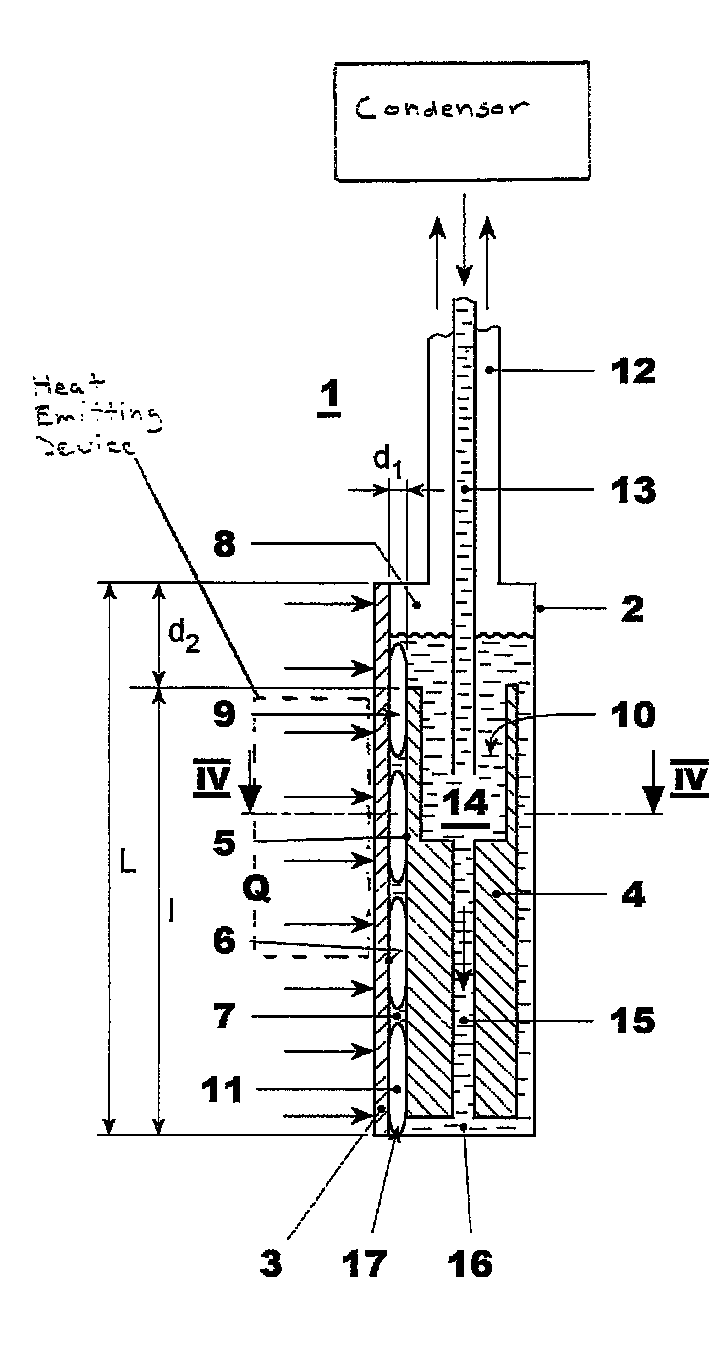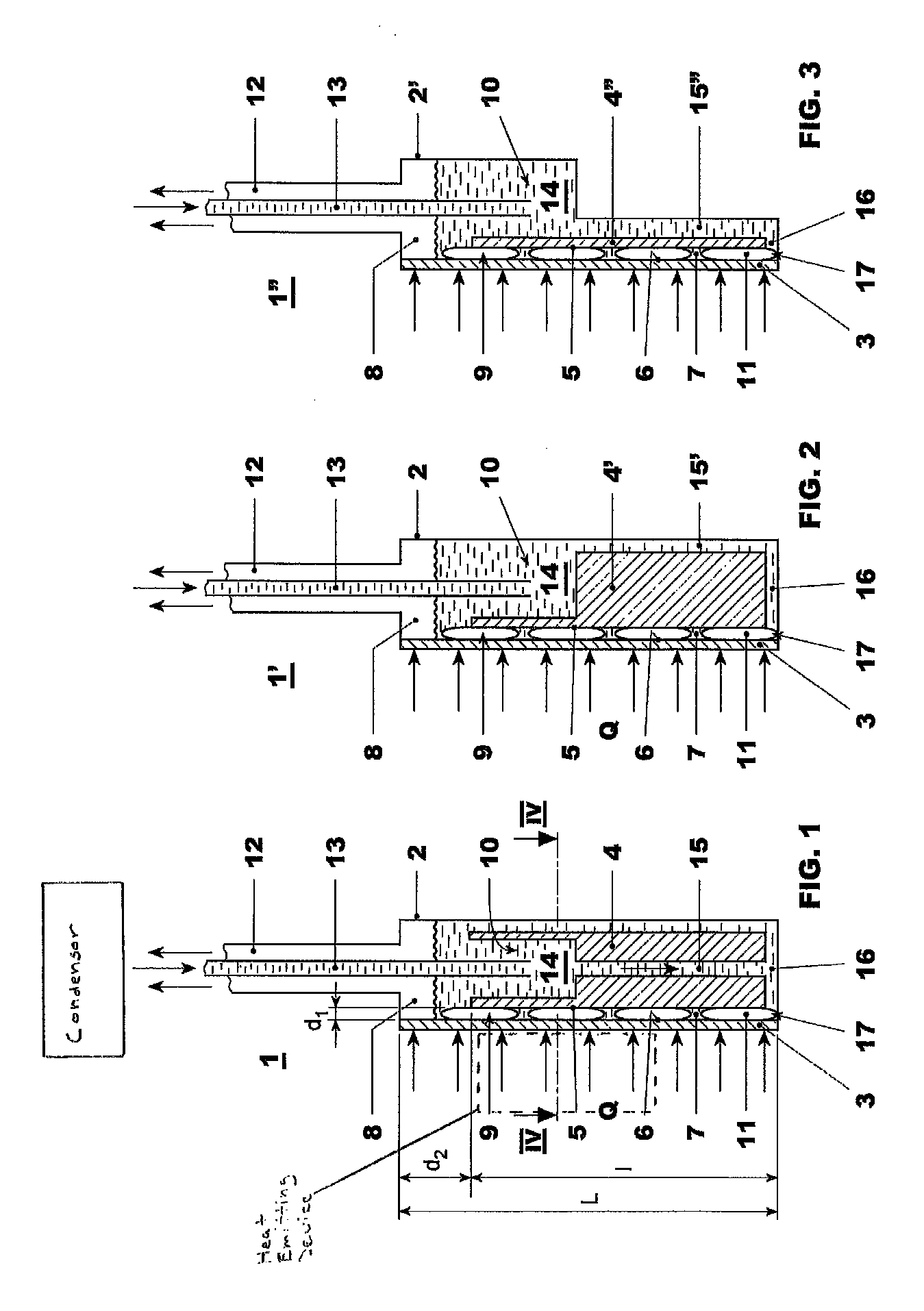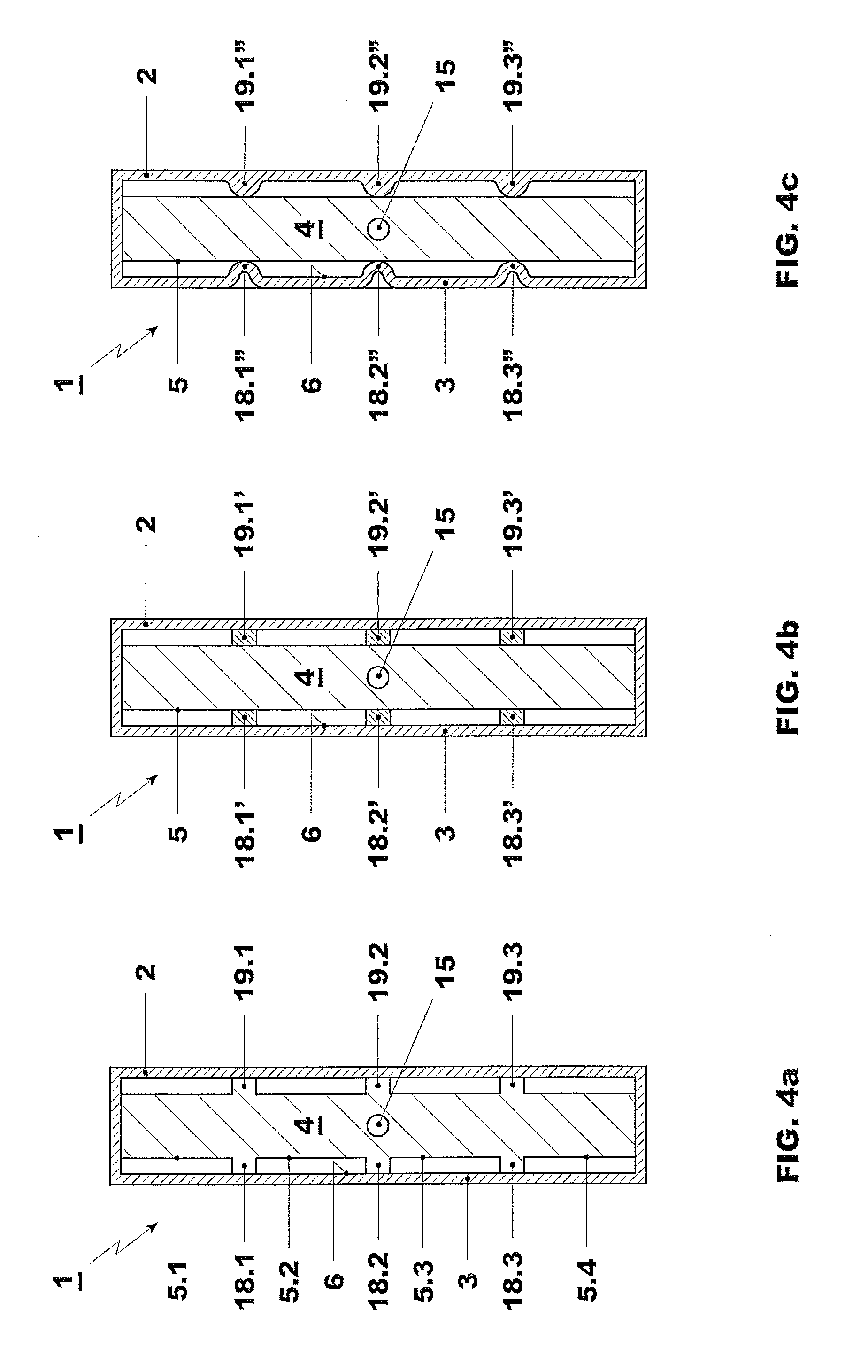Evaporator for a cooling circuit
a cooling circuit and evaporator technology, applied in the field of evaporators for cooling circuits, can solve the problems of difficult leak proof at high pressure, poor heat transfer performance of pool-boiling, and relatively low efficiency of evaporators
- Summary
- Abstract
- Description
- Claims
- Application Information
AI Technical Summary
Benefits of technology
Problems solved by technology
Method used
Image
Examples
Embodiment Construction
[0015]In exemplary embodiments, an evaporator for a cooling circuit of a power module is disclosed which can, for example, provide an improved heat transfer without affecting the performance of a condenser of the cooling circuit.
[0016]The term power module is understood hereinafter as, for example, an assembly having at least one power electronic and / or power electric device, that is thermally connected to at least one cooling circuit. Moreover, the terms power electronic and / or power electric device and heat emitting device are used in an interchangeable manner hereinafter.
[0017]As to the cooling circuit, exemplary embodiments include the following characteristics: a cooling circuit for cooling at least one heat emitting device, wherein the cooling circuit includes an evaporator. The evaporator in turn includes a housing having at least one wall that is thermally connectable with (i.e., configured for connection with) the at least one heat emitting device. The evaporator further in...
PUM
 Login to View More
Login to View More Abstract
Description
Claims
Application Information
 Login to View More
Login to View More - R&D
- Intellectual Property
- Life Sciences
- Materials
- Tech Scout
- Unparalleled Data Quality
- Higher Quality Content
- 60% Fewer Hallucinations
Browse by: Latest US Patents, China's latest patents, Technical Efficacy Thesaurus, Application Domain, Technology Topic, Popular Technical Reports.
© 2025 PatSnap. All rights reserved.Legal|Privacy policy|Modern Slavery Act Transparency Statement|Sitemap|About US| Contact US: help@patsnap.com



